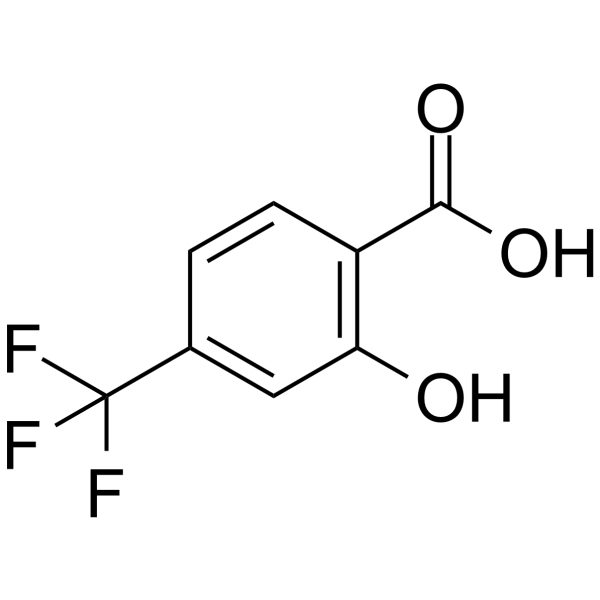Protective effect of triflusal and its main metabolite HTB in an in vitro model of anoxia-reoxygenation in rat brain slices: comparison with acetylsalicylic and salicylic acids.
J A González-Correa, M M Arrebola, I M Ureña, D Ruiz-Villafranca, J Muñoz-Marín, A Guerrero, F Sánchez de la Cuesta, J P De La Cruz
Index: Naunyn Schmiedebergs Arch. Pharmacol. 371(1) , 81-8, (2005)
Full Text: HTML
Abstract
Triflusal is a fluorinated derivative of acetylsalicylic acid (ASA) with demonstrated antithrombotic activity. Recently, evidence for a neuroprotective effect has been obtained. The aim of this study was to compare the neuroprotective effects of the main metabolite of triflusal (2-hydroxy-4-trifluoromethylbenzoic acid, HTB) and the ASA metabolite salicylic acid (SA) in an in vitro model of anoxia-reoxygenation in rat brain slices. Rat brain slices (n=10 per group) were subjected to a period of anoxia followed by 180 min reoxygenation. We measured oxidative stress parameters (lipid peroxidation, glutathione system), prostaglandins (PGE(2)), nitric oxide pathway activity (NO) (nitrites+nitrates, constitutive and inducible NO synthase activity) and LDH efflux, a biochemical marker of cell death. Various concentrations (10, 100 and 1,000 microM) of triflusal, HTB, ASA or SA were tested. Triflusal at 10, 100 and 1,000 microM decreased LDH efflux in rat brain slices after anoxia/reoxygenation by 24%, 35% and 49% respectively. This effect was proportionately greater than that of ASA (0%, 13% and 32%). The results with HTB were similar to those with triflusal, whereas SA showed a greater protective effect than ASA (13%, 33% and 35%). The antioxidant effects of HTB and SA on the biochemical mechanisms of cell damage studied here were also greater than the effects of triflusal and ASA, a finding attributable mainly to the decrease in lipid peroxidation and to the ability of HTB to also increase glutathione levels. The triflusal metabolite reduced inducible NO synthase activity by 18%, 21% and 30%, whereas SA inhibited this activity by 9%, 17% and 23%. Triflusal and HTB led to greater increases in NO synthase than ASA or AS. In conclusion, the metabolite HTB plays an important role in the neuroprotective effect of triflusal, at least in the experimental model of anoxia-reoxygenation tested here.
Related Compounds
| Structure | Name/CAS No. | Molecular Formula | Articles |
|---|---|---|---|
 |
4-Trifluoromethylsalicylic acid
CAS:328-90-5 |
C8H5F3O3 |
|
The study of the influence of surfactant charge on alkaline ...
2007-07-01 [Eur. J. Pharm. Sci. 31(3-4) , 211-20, (2007)] |
|
A phase I study to characterize the multiple-dose pharmacoki...
2011-12-01 [Expert Opin. Drug Metab. Toxicol. 7(12) , 1471-9, (2011)] |
|
Salicylates increase insulin secretion in healthy obese subj...
2008-07-01 [J. Clin. Endocrinol. Metab. 93(7) , 2523-30, (2008)] |
|
Protective effects of triflusal on secondary thrombus growth...
2008-08-01 [J. Thromb. Haemost. 6(8) , 1385-92, (2008)] |
|
Photonucleophilic addition of the epsilon-amino group of lys...
2009-07-01 [ChemMedChem 4(7) , 1196-202, (2009)] |